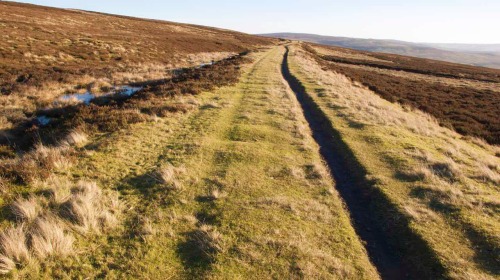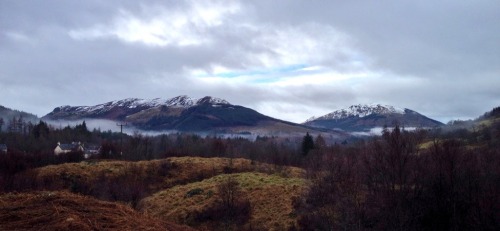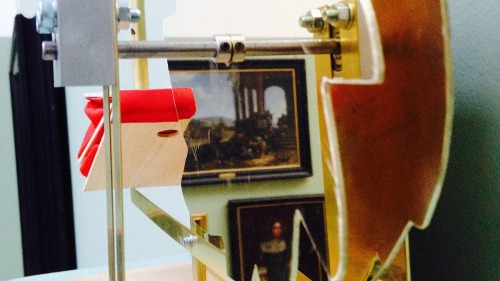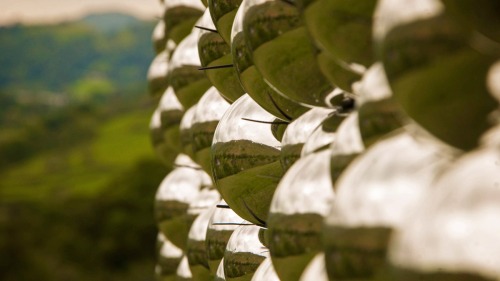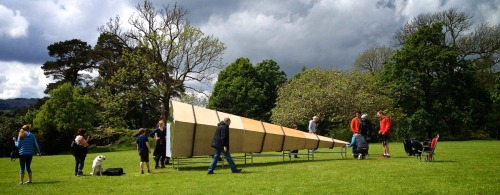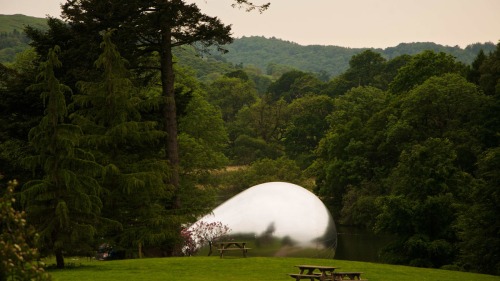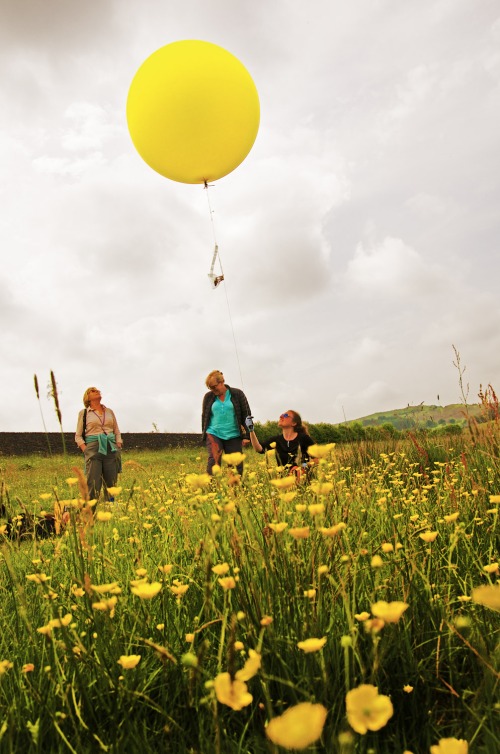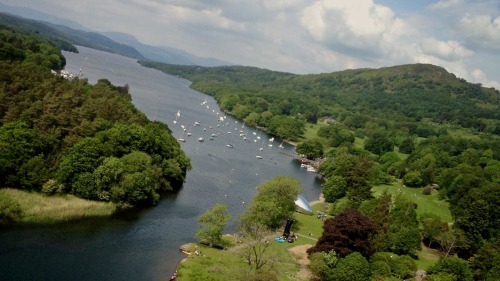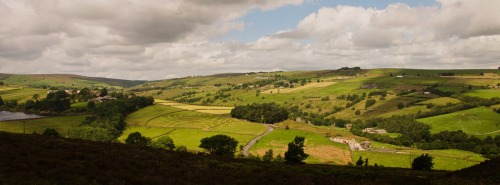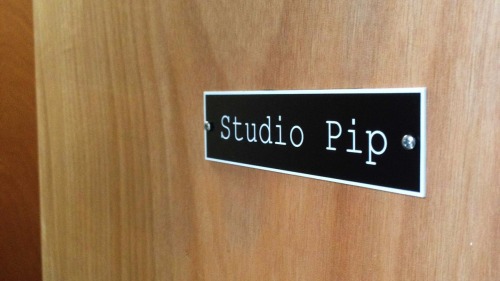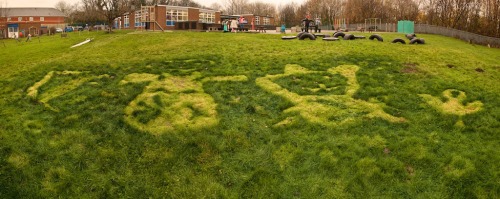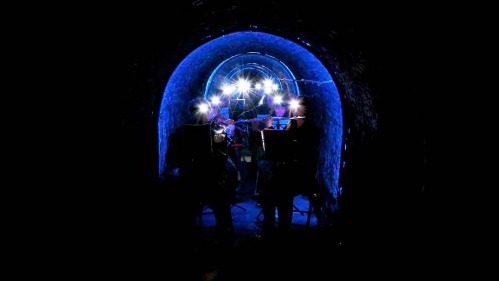Time is a funny old thing.
It’s always around but there never seems enough of it. And look – there goes another year of the stuff. Gone. Fortunately there’s another one now. I hope it sticks around a bit longer than the last one – there’s so much to fit in it this time around.
————————————
There’s nothing quite like a long, bracing walk to flush away the cobwebs from the brain and kickstart it again after the holiday season. Yesterday I ventured over the hills into Weardale and beyond to explore Rookhope. Like much of the upper dales, Rookhope grew up as a heart of the industrial landscape of lead and iron mining.
Buried deep in its own valley, limestone and pig lead were transported out of the village by way of a rope-hauled incline. A mile or so up the hill the wagons were then transported by steam loco across the network of lines that criss-crossed their way over the North Pennines to connect with the wider railway network in Consett, Tow Law and beyond to Newcastle and the Tyne docks. The line at the top of Bolts Law, above Rookhope, was the highest standard gauge railway in the UK. The long sweeping curve from Bolts Law to the junction at Park Head has some of the widest and wildest views in this part of the North Pennines with views out to the Sunderland coast on a clear day.
That line closed in 1923, yet you can still see the ghosts of the sleepers along the line. Landscape has memory. That’s a good thing as it has lots of stories to tell.
I started the year off in Lochearnhead uncovering stories in the landscape within the Loch Lomond and Trossachs National Park. I’d been artist in residence since the previous September and was just refining some of the ideas I was working on. Some of the things I had become interested in were about sound and how in travelled in the vast wilderness landscapes of the highlands. I liked the two-way dialogue it had with the landscape – how sound could describe the character and material of the hills and lochs and woodlands and how in return the weather, temperature and ambience affected the quality and volume of sound.
There was also another narrative about National Parks – why they exist, who they exist for and how where they are, and the role that railways had in opening up wild landscapes to a wider population as an antidote to urbanism.
The result of all this was a proposed 18-mile long sound installation based on steam engine whistles up a disused railway line. I’m genuinely excited by the ‘Whistle’ piece. I’d set out looking for a way to work with the scale of landscapes you get in the Scottish Highlands.
Back in February we did a first test using a couple of whistles in Glen Ogle. In April we upped that to six over two miles. That’s the longest distance I’d ever worked at so there was lots to learn. BBC Radio Scotland came down to see how it was going – you can hear the broadcast piece here:
Also in April I installed another sound piece. This time indoors in a gallery. The ‘Curlew Machine’ recreated the call of the curlew within the vaulted painting galleries at the wonderful Bowes Museum in Barnard Castle in an attempt to capture the audible essence of the open North Pennine landscape as part of the ‘Gods Bridge’ group exhibition. Although the machine didn’t actually make the bird sound – there’s a blog post about why that was impossible – the sound was a recording of a brass whistle I created and sounded using the metal machine as a speaker unit. Just as the ‘Whistle’ piece uses the landscape to temper the sound, the ‘Curlew Machine’ used the lively acoustics of the barrel-vaulted roof to carry the bird song right through the entire building. The painting galleries are on the second floor so wherever you were in the museum the sound came from somewhere overhead – just as the lonely curlew call is in the wild.
May brought another three pieces into the landscape. This time back in the Lake District. A series of works and events which uncovered the history of looking at the landscape – from strategic Roman defences, through the picturesque and romantic movements to WWII lookout posts and subaquatic recordings.
‘Lookout’ was a concrete WWII pillbox clad in 3,000 reflective baubles:
‘Scope’ was a giant kaleidoscope overlooking Windermere:
and down at the southern end of Windermere, at Fell Foot Park, ‘Drop’ had its final outing:
In between were Chinese watercolour workshops at Rydal Hall, magnetic poetry on the car ferry and in two locations artist Bryony Purvis sent people’s mobile phones 1,000ft up into the sky under a bright yellow weather balloon.
There’s a whole blog post on this project too..
June saw the creation of ‘Ravens’ – a artwork in grass designed to be seen from the sky. 2014 was the year the Tour de France came to Yorkshire. The media was full of pictures of huge crowds in beautiful green countryside. One of the comments I frequently get when doing lectures overseas is that people didn’t realise how stunning the north of England was. The Tour de France in Yorkshire not only showed the classic beauty of the county’s countryside, but also the spirit of the communities that live and work there. Creating a piece for one of the world’s largest sporting events was a truly memorable experience made even more special by the people and community I got to work with.
The summer months were marked by some of the sunniest and hottest weather in recent years. It was also when I moved out from my house on the mountain to somewhere equally stunning but more practical. I also moved into a sparkly new studio thanks to the wonderful people at UTASS. Having a proper studio away from home for the first time in years has been huge step for me. Although I feel like I’m still moving in, I can already see a change in the way I’m working. How that manifests itself over the next 12 months is yet to be seen, but I think this could be significant step.
The autumn saw two last projects. The first was a low-key project with an infants school in Workington in West Cumbria. A really quick project working with five and six year old kids. We did big paintings – big for them (A3) and then scaled them up really big to a drawing in grass (25 metres). The original idea was to use big tarpaulin stencils to bleach the grass and change its colour by restricting photosynthesis. Probably too technical for a 6 year old, but potentially interesting for me. However, we probably started too late in the season and for what ever reason, after 6 weeks it wasn’t working properly, so we had to cheat a bit. It’s not a masterpiece and I don’t really do schools projects, but I quite liked the simplicity and naivety of the kids drawings. I quite like the effect too. Might use this again sometime…
The other piece saw a 22-piece orchestra perform in a 6ft wide tunnel underneath Newcastle. The collaborative project with the Cobweb Orchestra, composer Michael Betteridge and myself was a pilot for a larger series exploring the musical and subterranean heritage of the northern counties. Michael wrote a new site-specific work for the orchestra which was performed alongside a programme of mostly new works from the North East. The thinking was a concert underground is an amazing thing in itself, but combining it with a light installation we could transform it into something incredible. The concert in October in front of a sell-out audience of 60 or so standing in pitch darkness was pulled together on a shoestring. To compound the problems the Victoria Tunnel is a listed structure so I couldn’t attach anything to the fabric of the tunnel. Still, I like a challenge. I used mono-frequency light sources (at around 465nm) – under low light conditions this part of the blue spectrum stimulates the brain in the same way that I use red in daylight. Something known as the Purkinje effect (it’s technical). The result is that visually the orchestra were in a block of pure colour. Doesn’t work so well in the photos (it relies on you being there) but still looks good with the head torches.
In between all those things there’s been an endless stream of research and preparation for lots of new projects for the future. Quite when those futures will be is subject to lots of variables. Some are finance issues, some are way more complicated. Either way, they all take time. Fortunately time is going to be around for while yet.
